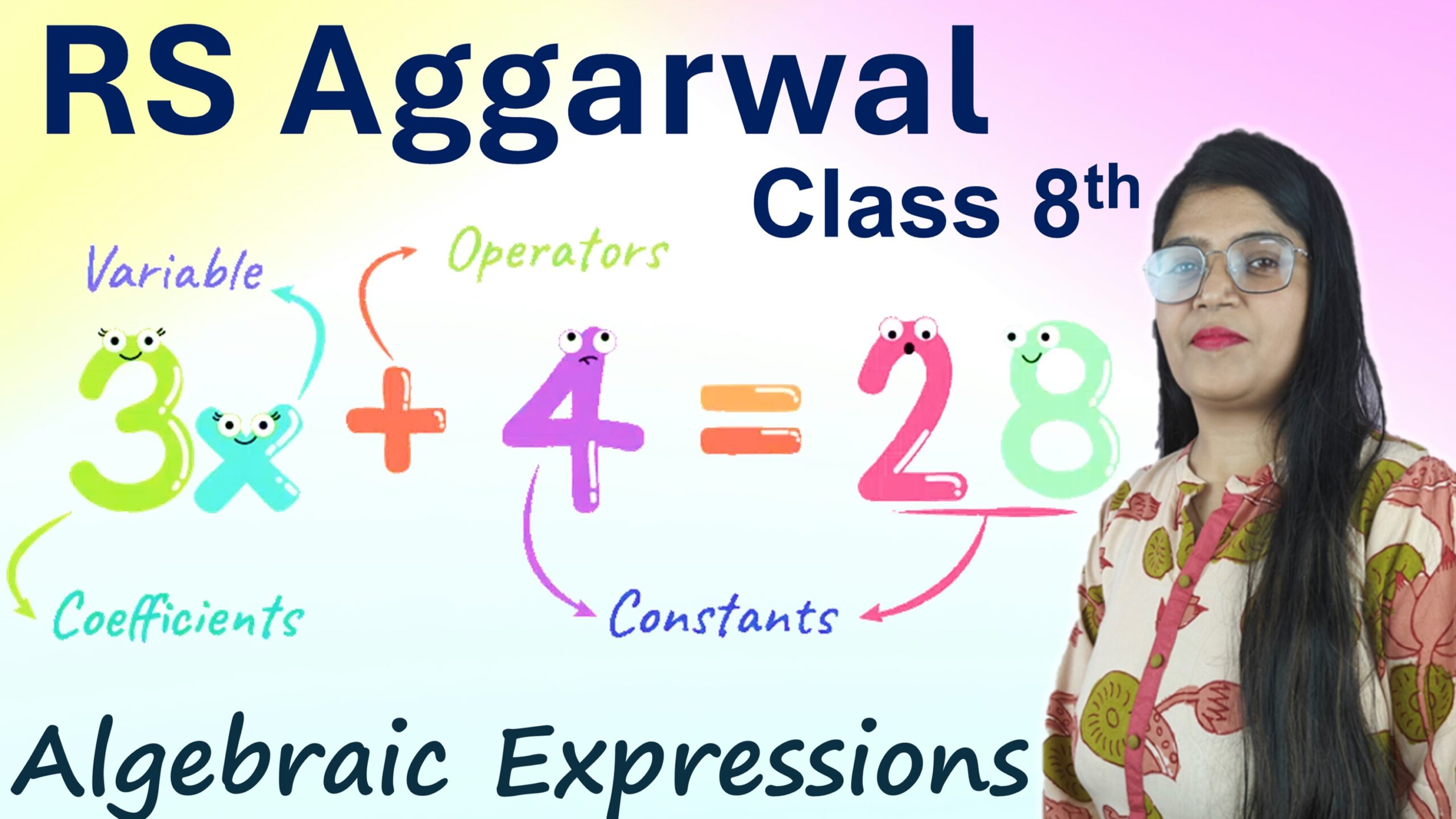Exercise: 2-C
Q1: Add:
i. \(\frac{7}{5}\) and \(\frac{2}{5}\)
Same denominator:
\[
\frac{7+2}{5} = \frac{9}{5}
\]Answer: \(\frac{9}{5}\)
ii. \(\frac{-4}{9}\) and \(\frac{2}{9}\)
Same denominator:
\[
\frac{-4+2}{9} = \frac{-2}{9}
\]Answer: \(\frac{-2}{9}\)
iii. \(\frac{5}{-12}\) and \(\frac{1}{12}\)
Simplify:
\[
\frac{5}{-12} = -\frac{5}{12}
\]
Now:
\[
-\frac{5}{12} + \frac{1}{12} = \frac{-4}{12} = \frac{-1}{3}
\]Answer: \(\frac{-1}{3}\)
iv. \(\frac{4}{-15}\) and \(\frac{-7}{-15}\)
Simplify:
\[
\frac{4}{-15} = -\frac{4}{15}, \quad \frac{-7}{-15} = \frac{7}{15}
\]Now:
\[
-\frac{4}{15} + \frac{7}{15} = \frac{3}{15} = \frac{1}{5}
\]Answer: \(\frac{1}{5}\)
v. \(\frac{-7}{25}\) and \(\frac{9}{-25}\)
Simplify:
\[
\frac{9}{-25} = -\frac{9}{25}
\]Now:
\[
-\frac{7}{25} + (-\frac{9}{25}) = \frac{-16}{25}
\]Answer: \(\frac{-16}{25}\)
vi. \(\frac{-7}{26}\) and \(\frac{7}{-26}\)
Simplify:
\[
\frac{7}{-26} = -\frac{7}{26}
\]Now:
\[
-\frac{7}{26} + (-\frac{7}{26}) = \frac{-14}{26} = \frac{-7}{13}
\]Answer: \(\frac{-7}{13}\)
Q2: Add:
i. \(\frac{-2}{5}\ and\ \frac{3}{7}\)
We need to add two rational numbers with different denominators. First, find the LCM of 5 and 7, which is 35. Then, rewrite both fractions with denominator 35.
\(\frac{-2}{5} = \frac{-2 \times 7}{5 \times 7} = \frac{-14}{35}\)
\(\frac{3}{7} = \frac{3 \times 5}{7 \times 5} = \frac{15}{35}\)
Now add the fractions: \(\frac{-14}{35} + \frac{15}{35} = \frac{-14 + 15}{35} = \frac{1}{35}\)
Answer: \(\frac{1}{35}\)
ii. \(\frac{-5}{6}\ and\ \frac{4}{9}\)
The LCM of 6 and 9 is 18. Rewriting the fractions with denominator 18:
\(\frac{-5}{6} = \frac{-5 \times 3}{6 \times 3} = \frac{-15}{18}\)
\(\frac{4}{9} = \frac{4 \times 2}{9 \times 2} = \frac{8}{18}\)
Now add the fractions: \(\frac{-15}{18} + \frac{8}{18} = \frac{-15 + 8}{18} = \frac{-7}{18}\)
Answer: \(\frac{-7}{18}\)
iii. \(-3\ and\ \frac{2}{3}\)
We need to express -3 as a fraction with denominator 3: \(-3 = \frac{-9}{3}\).
Now add: \(\frac{-9}{3} + \frac{2}{3} = \frac{-9 + 2}{3} = \frac{-7}{3}\)
Answer: \(\frac{-7}{3}\)
iv. \(\frac{-5}{9}\ and\ \frac{7}{18}\)
The LCM of 9 and 18 is 18. Rewriting the fractions with denominator 18:
\(\frac{-5}{9} = \frac{-5 \times 2}{9 \times 2} = \frac{-10}{18}\)
Now add: \(\frac{-10}{18} + \frac{7}{18} = \frac{-10 + 7}{18} = \frac{-3}{18} = \frac{-1}{6}\)
Answer: \(\frac{-1}{6}\)
v. \(\frac{-7}{24}\ and\ \frac{-5}{48}\)
The LCM of 24 and 48 is 48. Rewriting the fractions with denominator 48:
v
\(\frac{-7}{24} = \frac{-7 \times 2}{24 \times 2} = \frac{-14}{48}\)
Now add: \(\frac{-14}{48} + \frac{-5}{48} = \frac{-14 – 5}{48} = \frac{-19}{48}\)
Answer: \(\frac{-19}{48}\)
vi. \(\frac{1}{-18}\ and\ \frac{5}{-27}\)
The LCM of 18 and 27 is 54. Rewriting the fractions with denominator 54:
\(\frac{1}{-18} = \frac{1 \times 3}{-18 \times 3} = \frac{3}{-54}\)
\(\frac{5}{-27} = \frac{5 \times 2}{-27 \times 2} = \frac{10}{-54}\)
Now add: \(\frac{3}{-54} + \frac{10}{-54} = \frac{3 + 10}{-54} = \frac{13}{-54} = -\frac{13}{54}\)
Answer: \(\frac{13}{54}\)
vii. \(\frac{-9}{25}\ and\ \frac{1}{-75}\)
The LCM of 25 and 75 is 75. Rewriting the fractions with denominator 75:
\(\frac{-9}{25} = \frac{-9 \times 3}{25 \times 3} = \frac{-27}{75}\)
Now add: \(\frac{-27}{75} + \frac{1}{-75} = \frac{-27 – 1}{75} = \frac{-28}{75}\)
Answer: \(\frac{-28}{75}\)
viii. \(\frac{13}{-16}\ and\ \frac{-11}{24}\)
The LCM of 16 and 24 is 48. Rewriting the fractions with denominator 48:
\(\frac{13}{-16} = \frac{13 \times 3}{-16 \times 3} = \frac{39}{-48}\)
\(\frac{-11}{24} = \frac{-11 \times 2}{24 \times 2} = \frac{-22}{48}\)
Now add: \(\frac{-39}{48} + \frac{-22}{48} = \frac{-39 – 22}{48} = \frac{-61}{48} = -\frac{61}{48}\)
Answer: \(-\frac{61}{48}\)
ix. \(\frac{-9}{-16}\ and\ \frac{-11}{8}\)
The LCM of 16 and 8 is 16. Rewriting the fractions with denominator 16:
\(\frac{-9}{-16} = \frac{9}{16}\)
\(\frac{-11}{8} = \frac{-11 \times 2}{8 \times 2} = \frac{-22}{16}\)
Now add: \(\frac{9}{16} + \frac{-22}{16} = \frac{9 – 22}{16} = \frac{-13}{16}\)
Answer: \(\frac{-13}{16}\)
Q3: Evaluate:
i. \(\frac{-2}{5}+\frac{3}{5}+\frac{-1}{5}\)
Same denominator:
\[
\frac{-2+3-1}{5} = \frac{0}{5} = 0
\]Answer: 0
ii. \(\frac{-8}{9}+\frac{4}{9}+\frac{-2}{9}\)
Same denominator:
\[
\frac{-8+4-2}{9} = \frac{-6}{9} = \frac{-2}{3}
\]Answer: \(\frac{-2}{3}\)
iii. \(\frac{5}{-24}+\frac{-1}{8}+\frac{3}{16}\)
LCM of 24, 8, and 16 is 48. Now express all fractions with denominator 48:
\[
\frac{5}{-24} = \frac{-10}{48}, \quad \frac{-1}{8} = \frac{-6}{48}, \quad \frac{3}{16} = \frac{9}{48}
\]
Add:
\[
\frac{-10}{48} + \frac{-6}{48} + \frac{9}{48} = \frac{-7}{48}
\]Answer: \(\frac{-7}{48}\)
iv. \(\frac{-7}{6}+\frac{4}{-15}+\frac{-4}{-30}\)
LCM of 6, 15, and 30 is 30. Now express all fractions with denominator 30:
\[
\frac{-7}{6} = \frac{-35}{30}, \quad \frac{4}{-15} = \frac{-8}{30}, \quad \frac{-4}{-30} = \frac{4}{30}
\]
Add:
\[
\frac{-35}{30} + \frac{-8}{30} + \frac{4}{30} = \frac{-39}{30} = \frac{-13}{10}
\]Answer: \(\frac{-13}{10}\)
v. \(-2+\frac{2}{5}+\frac{-2}{15}\)
LCM of 5 and 15 is 15. Now express all fractions with denominator 15:
\[
-2 = \frac{-30}{15}, \quad \frac{2}{5} = \frac{6}{15}, \quad \frac{-2}{15} = \frac{-2}{15}
\]
Add:
\[
\frac{-30}{15} + \frac{6}{15} + \frac{-2}{15} = \frac{-26}{15}
\]Answer: \(\frac{-26}{15}\)
vi. \(\frac{-11}{12}+\frac{5}{16}+\frac{-3}{8}\)
LCM of 12, 16, and 8 is 48. Now express all fractions with denominator 48:
\[
\frac{-11}{12} = \frac{-44}{48}, \quad \frac{5}{16} = \frac{15}{48}, \quad \frac{-3}{8} = \frac{-18}{48}
\]
Add:
\[
\frac{-44}{48} + \frac{15}{48} + \frac{-18}{48} = \frac{-47}{48}
\]Answer: \(\frac{-47}{48}\)
Q4: Evaluate:
i. \(-\frac{11}{18}+\frac{-3}{9}+\frac{2}{-3}\)
LCM of 18, 9, and 3 is 18. Now express all fractions with denominator 18:
\[
-\frac{11}{18} = \frac{-11}{18}, \quad \frac{-3}{9} = \frac{-6}{18}, \quad \frac{2}{-3} = \frac{-12}{18}
\]
Add:
\[
\frac{-11}{18} + \frac{-6}{18} + \frac{-12}{18} = \frac{-29}{18}
\]
Answer: \(\frac{-29}{18}\)
ii. \(\frac{-9}{4}+\frac{13}{3}+\frac{25}{6}\)
LCM of 4, 3, and 6 is 12. Now express all fractions with denominator 12:
\[
\frac{-9}{4} = \frac{-27}{12}, \quad \frac{13}{3} = \frac{52}{12}, \quad \frac{25}{6} = \frac{50}{12}
\]
Add:
\[
\frac{-27}{12} + \frac{52}{12} + \frac{50}{12} = \frac{75}{12} = \frac{25}{4}
\]
Answer: \(\frac{25}{4}\)
iii. \(-5+\frac{5}{-8}+\frac{-5}{-12}\)
LCM of 8 and 12 is 24. Now express all fractions with denominator 24:
\[
-5 = \frac{-120}{24}, \quad \frac{5}{-8} = \frac{-15}{24}, \quad \frac{-5}{-12} = \frac{10}{24}
\]
Add:
\[
\frac{-120}{24} + \frac{-15}{24} + \frac{10}{24} = \frac{-125}{24}
\]Answer: \(\frac{-125}{24}\)
iv. \(-\frac{2}{3}+\frac{5}{2}+2\)
LCM of 3, 2, and 1 is 6. Now express all fractions with denominator 6:
\[
-\frac{2}{3} = \frac{-4}{6}, \quad \frac{5}{2} = \frac{15}{6}, \quad 2 = \frac{12}{6}
\]
Add:
\[
\frac{-4}{6} + \frac{15}{6} + \frac{12}{6} = \frac{23}{6}
\]Answer: \(\frac{23}{6}\)
v. \(5+\frac{-3}{4}+\frac{-5}{8}\)
LCM of 4 and 8 is 8. Now express all fractions with denominator 8:
\[
5 = \frac{40}{8}, \quad \frac{-3}{4} = \frac{-6}{8}, \quad \frac{-5}{8} = \frac{-5}{8}
\]
Add:
\[
\frac{40}{8} + \frac{-6}{8} + \frac{-5}{8} = \frac{29}{8}
\]Answer: \(\frac{29}{8}\)
Q5: Subtract:
i. \(\frac{2}{9}\ from\ \frac{5}{9}\)
Since the denominators are the same, subtract the numerators:
\[
\frac{5}{9} – \frac{2}{9} = \frac{3}{9} = \frac{1}{3}
\]Answer: \(\frac{1}{3}\)
ii. \(\frac{-6}{11}\ from\ \frac{-3}{-11}\)
Since the denominators are the same, subtract the numerators:
\[
\frac{-3}{-11} – \frac{-6}{11} = \frac{3}{11} + \frac{6}{11} = \frac{9}{11}
\]Answer: \(\frac{9}{11}\)
iii. \(\frac{-2}{15}\ from\ \frac{-8}{15}\)
Since the denominators are the same, subtract the numerators:
\[
\frac{-8}{15} – \frac{-2}{15} = \frac{-8 + 2}{15} = \frac{-6}{15} = \frac{-2}{5}
\]Answer: \(\frac{-2}{5}\)
iv. \(\frac{11}{18}\ from\ \frac{-5}{18}\)
Since the denominators are the same, subtract the numerators:
\[
\frac{-5}{18} – \frac{11}{18} = \frac{-16}{18} = \frac{-8}{9}
\]Answer: \(\frac{-8}{9}\)
v. \(\frac{-4}{11}\ from\ -2\)
Convert -2 to a fraction:
\[
-2 = \frac{-22}{11}
\]
Now subtract:
\[
\frac{-22}{11} – \frac{-4}{11} = \frac{-22 + 4}{11} = \frac{-18}{11}
\]Answer: \(\frac{-18}{11}\)
Q6: Subtract:
i. \(-\frac{3}{10}\ from\ \frac{1}{5}\)
We are subtracting \(-\frac{3}{10}\) from \(\frac{1}{5}\), so this is equivalent to:
\(\frac{1}{5} – \left(-\frac{3}{10}\right) = \frac{1}{5} + \frac{3}{10}\)
The LCM of 5 and 10 is 10. Rewriting both fractions with denominator 10:
\(\frac{1}{5} = \frac{1 \times 2}{5 \times 2} = \frac{2}{10}\)
Now add: \(\frac{2}{10} + \frac{3}{10} = \frac{5}{10} = \frac{1}{2}\)
Answer: \(\frac{1}{2}\)
ii. \(\frac{-6}{25}\ from\ \frac{-8}{5}\)
We are subtracting \(\frac{-6}{25}\) from \(\frac{-8}{5}\), so this is equivalent to:
\(\frac{-8}{5} – \left(-\frac{6}{25}\right) = \frac{-8}{5} + \frac{6}{25}\)
The LCM of 5 and 25 is 25. Rewriting both fractions with denominator 25:
\(\frac{-8}{5} = \frac{-8 \times 5}{5 \times 5} = \frac{-40}{25}\)
Now add: \(\frac{-40}{25} + \frac{6}{25} = \frac{-40 + 6}{25} = \frac{-34}{25}\)
Answer: \(\frac{-34}{25}\)
iii. \(\frac{-7}{4}\ from\ -2\)
We are subtracting \(\frac{-7}{4}\) from \(-2\), so this is equivalent to:
\(-2 – \left(\frac{-7}{4}\right) = -2 + \frac{7}{4}\)
We express -2 as \(\frac{-8}{4}\) and then add:
\(\frac{-8}{4} + \frac{7}{4} = \frac{-8 + 7}{4} = \frac{-1}{4}\)
Answer: \(\frac{-1}{4}\)
iv. \(\frac{-16}{21}\ from\ 1\)
We are subtracting \(\frac{-16}{21}\) from 1, so this is equivalent to:
\(1 – \left(\frac{-16}{21}\right) = 1 + \frac{16}{21}\)
We express 1 as \(\frac{21}{21}\) and then add:
\(\frac{21}{21} + \frac{16}{21} = \frac{21 + 16}{21} = \frac{37}{21}\)
Answer: \(\frac{37}{21}\)
v. \(\frac{-8}{15}\ from\ 0\)
We are subtracting \(\frac{-8}{15}\) from 0, so this is equivalent to:
\(0 – \left(\frac{-8}{15}\right) = 0 + \frac{8}{15} = \frac{8}{15}\)
Answer: \(\frac{8}{15}\)
vi. \(0\ from\ \frac{-3}{8}\)
We are subtracting 0 from \(\frac{-3}{8}\), so this is equivalent to:
\(\frac{-3}{8} – 0 = \frac{-3}{8}\)
Answer: \(\frac{-3}{8}\)
vii. \(-2\ from\ \frac{-3}{10}\)
We are subtracting \(-2\) from \(\frac{-3}{10}\), so this is equivalent to:
\(\frac{-3}{10} – (-2) = \frac{-3}{10} + 2 = \frac{-3}{10} + \frac{20}{10} = \frac{17}{10}\)
Answer: \(\frac{17}{10}\)
viii. \(\frac{5}{8}\ from\ \frac{-5}{16}\)
We are subtracting \(\frac{5}{8}\) from \(\frac{-5}{16}\), so this is equivalent to:
\(\frac{-5}{16} – \frac{5}{8} = \frac{-5}{16} – \frac{10}{16} = \frac{-5 – 10}{16} = \frac{-15}{16}\)
Answer: \(\frac{-15}{16}\)
ix. \(4\ from\ -\frac{3}{13}\)
We are subtracting 4 from \(-\frac{3}{13}\), so this is equivalent to:
– \(\frac{3}{13} – 4 = -\frac{3}{13} – \frac{52}{13} = \frac{-3 – 52}{13} = \frac{-55}{13}\)
Answer: \(\frac{-55}{13}\)
Q7: The sum of two rational numbers is \(\frac{11}{24}\). If one of them is \(\frac{3}{8}\), find the other.
We are given:
\[
\text{Sum} = \frac{11}{24}, \quad \text{One number} = \frac{3}{8}
\]
Let the other number be \(x\). So:
\[
\frac{3}{8} + x = \frac{11}{24}
\]
Subtract \(\frac{3}{8}\) from both sides:
\[
x = \frac{11}{24} – \frac{3}{8}
\]
To subtract, find the LCM of 24 and 8, which is 24. Now express both fractions with denominator 24:
\[
\frac{3}{8} = \frac{9}{24}
\]
Now subtract:
\[
x = \frac{11}{24} – \frac{9}{24} = \frac{2}{24} = \frac{1}{12}
\]Answer: \(\frac{1}{12}\)
Q8: The sum of two rational numbers is \(\frac{-7}{12}\). If one of them is \(\frac{13}{24}\), find the other.
We are given:
\[
\text{Sum} = \frac{-7}{12}, \quad \text{One number} = \frac{13}{24}
\]Let the other number be \(x\). So:
\[
\frac{13}{24} + x = \frac{-7}{12}
\]Subtract \(\frac{13}{24}\) from both sides:
\[
x = \frac{-7}{12} – \frac{13}{24}
\]To subtract, find the LCM of 12 and 24, which is 24. Now express both fractions with denominator 24:
\[
\frac{-7}{12} = \frac{-14}{24}
\]Now subtract:
\[
x = \frac{-14}{24} – \frac{13}{24} = \frac{-27}{24} = \frac{-9}{8}
\]Answer: \(\frac{-9}{8}\)
Q9: The sum of two rational numbers is \(-4\). If one of them is \(-\frac{13}{12}\), find the other.
We are given:
\[
\text{Sum} = -4, \quad \text{One number} = -\frac{13}{12}
\]Let the other number be \(x\). So:
\[
-\frac{13}{12} + x = -4
\]Subtract \(-\frac{13}{12}\) from both sides:
\[
x = -4 + \frac{13}{12}
\]Convert \(-4\) to a fraction:
\[
-4 = \frac{-48}{12}
\]Now subtract:
\[
x = \frac{-48}{12} + \frac{13}{12} = \frac{-35}{12}
\]Answer: \(\frac{-35}{12}\)
Q10: What should be added to \(-\frac{3}{32}\) to get \(\frac{53}{96}\)?
We are given:
\[
\text{Required sum} = \frac{53}{96}, \quad \text{First number} = -\frac{3}{32}
\]Let the required number be \(x\). So:
\[
-\frac{3}{32} + x = \frac{53}{96}
\]Add \(\frac{3}{32}\) to both sides:
\[
x = \frac{53}{96} + \frac{3}{32}
\]Convert \(\frac{3}{32}\) to denominator 96:
\[
\frac{3}{32} = \frac{9}{96}
\]Now add:
\[
x = \frac{53}{96} + \frac{9}{96} = \frac{62}{96} = \frac{31}{48}
\]Answer: \(\frac{31}{48}\)
Q11: What should be added to \(\frac{-3}{20}\) to get \(2\frac{9}{20}\)?
We are given:
\[
\text{Required sum} = 2\frac{9}{20}, \quad \text{First number} = -\frac{3}{20}
\]Convert the mixed fraction \(2\frac{9}{20}\) to an improper fraction:
\[
2\frac{9}{20} = \frac{40}{20} + \frac{9}{20} = \frac{49}{20}
\]Let the required number be \(x\). So:
\[
-\frac{3}{20} + x = \frac{49}{20}
\]Add \(\frac{3}{20}\) to both sides:
\[
x = \frac{49}{20} + \frac{3}{20} = \frac{52}{20} = \frac{13}{5}
\]Answer: \(\frac{13}{5}\)
Q12: What should be subtracted from \(\frac{-4}{5}\) to get 1?
We are given:
\[
\text{Required result} = 1, \quad \text{First number} = \frac{-4}{5}
\]Let the required number be \(x\). So:
\[
\frac{-4}{5} – x = 1
\]Subtract \(\frac{-4}{5}\) from both sides:
\[
x = \frac{-4}{5} – 1
\]Convert 1 to a fraction:
\[
1 = \frac{5}{5}
\]Now subtract:
\[
x = \frac{-4}{5} – \frac{5}{5} = \frac{-9}{5}
\]Answer: \(\frac{-9}{5}\)
Q13: The sum of two numbers is \(-\frac{6}{5}\). If one of them is -2, find the other.
We are given:
\[
\text{Sum} = -\frac{6}{5}, \quad \text{One number} = -2
\]Let the other number be \(x\). So:
\[
-2 + x = -\frac{6}{5}
\]Add 2 to both sides:
\[
x = -\frac{6}{5} + 2
\]Convert 2 to a fraction:
\[
2 = \frac{10}{5}
\]Now add:
\[
x = \frac{-6}{5} + \frac{10}{5} = \frac{4}{5}
\]Answer: \(\frac{4}{5}\)
Q14: What should be added to \(\frac{-7}{12}\) to get \(\frac{3}{8}\)?
We are given:
\[
\text{Required sum} = \frac{3}{8}, \quad \text{First number} = \frac{-7}{12}
\]Let the required number be \(x\). So:
\[
\frac{-7}{12} + x = \frac{3}{8}
\]Subtract \(\frac{-7}{12}\) from both sides:
\[
x = \frac{3}{8} – \frac{-7}{12}
\]To subtract, find the LCM of 8 and 12, which is 24. Now express both fractions with denominator 24:
\[
\frac{3}{8} = \frac{9}{24}, \quad \frac{-7}{12} = \frac{-14}{24}
\]Now subtract:
\[
x = \frac{9}{24} – \frac{-14}{24} = \frac{9 + 14}{24} = \frac{23}{24}
\]Answer: \(\frac{23}{24}\)
Q15: What should be subtracted from \(\frac{5}{9}\) to get \(\frac{9}{5}\)?
We are given:
\[
\text{Required result} = \frac{9}{5}, \quad \text{First number} = \frac{5}{9}
\]Let the required number be \(x\). So:
\[
\frac{5}{9} – x = \frac{9}{5}
\]Subtract \(\frac{5}{9}\) from both sides:
\[
x = \frac{5}{9} – \frac{9}{5}
\]To subtract, find the LCM of 9 and 5, which is 45. Now express both fractions with denominator 45:
\[
\frac{5}{9} = \frac{25}{45}, \quad \frac{9}{5} = \frac{81}{45}
\]Now subtract:
\[
x = \frac{25}{45} – \frac{81}{45} = \frac{-56}{45}
\]Answer: \(\frac{-56}{45}\)






